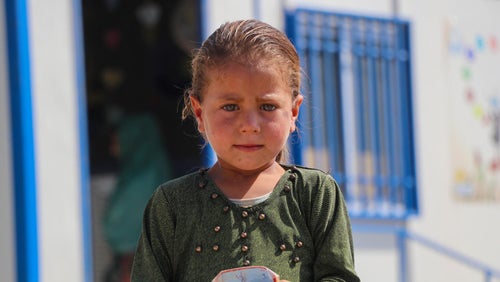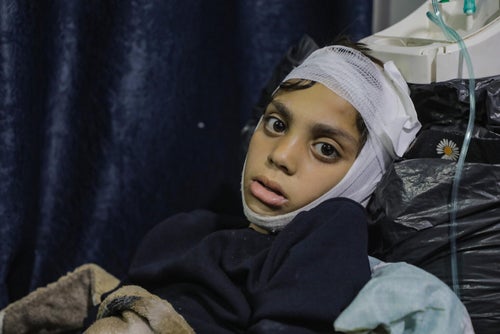Since 2011, millions of children have been growing up in a war zone, with almost nearly 7.5 million now in desperate need of humanitarian assistance – more than at any other time during the conflict.
Children continue to bear the brunt of the ongoing civil war. Many have experienced the unimaginable loss of their parents, brothers, sisters and friends.
This war is something no child should live through - yet millions do. Many have lost their childhoods and the promising futures that were rightfully theirs.
This is what it looks like for the children who are growing up in Syria.
Persevering through conflict
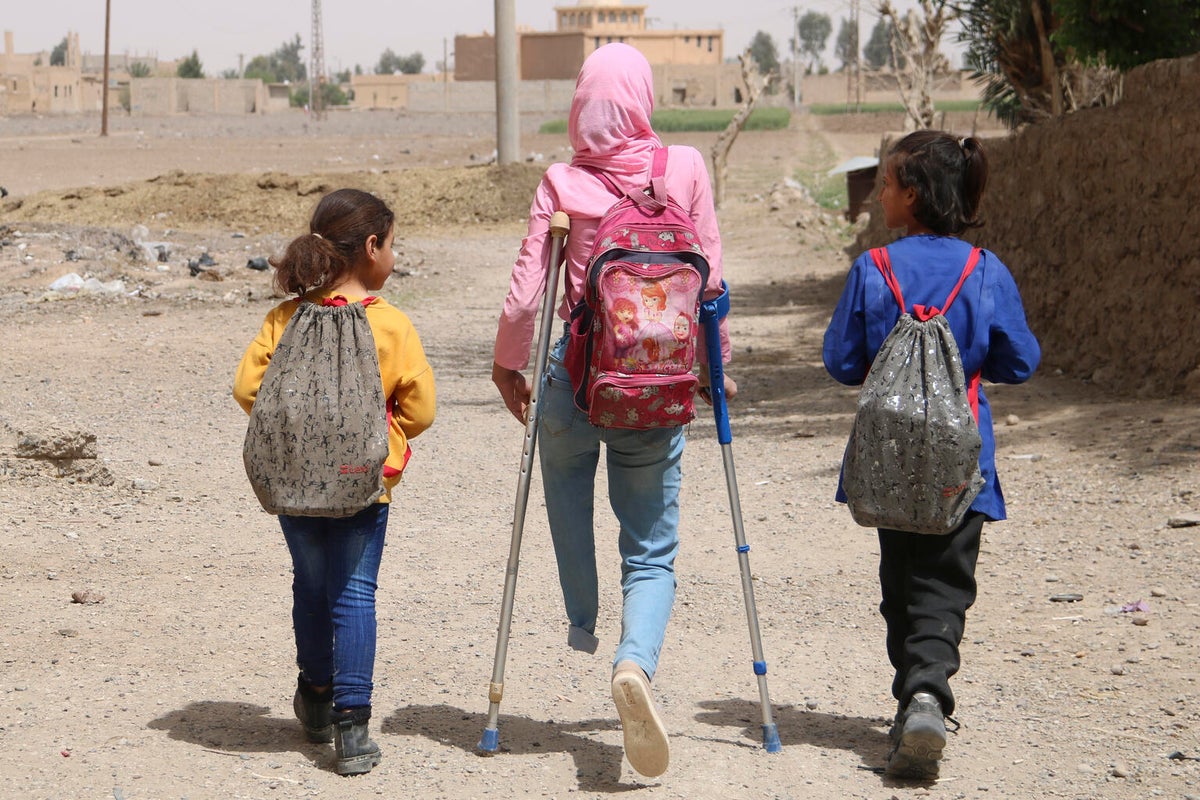
When Rola (middle) was just three years old, her life changed in an instant. While at a pharmacy with her parents, a shell struck the store, tragically killing her parents and severely injuring Rola’s leg and arm.
“Strangers rescued her and took her to the hospital,” says her uncle. At the time, the nearest functioning hospital was 48 kilometres away. Doctors had to make the call to amputate her leg before her relatives were reached.
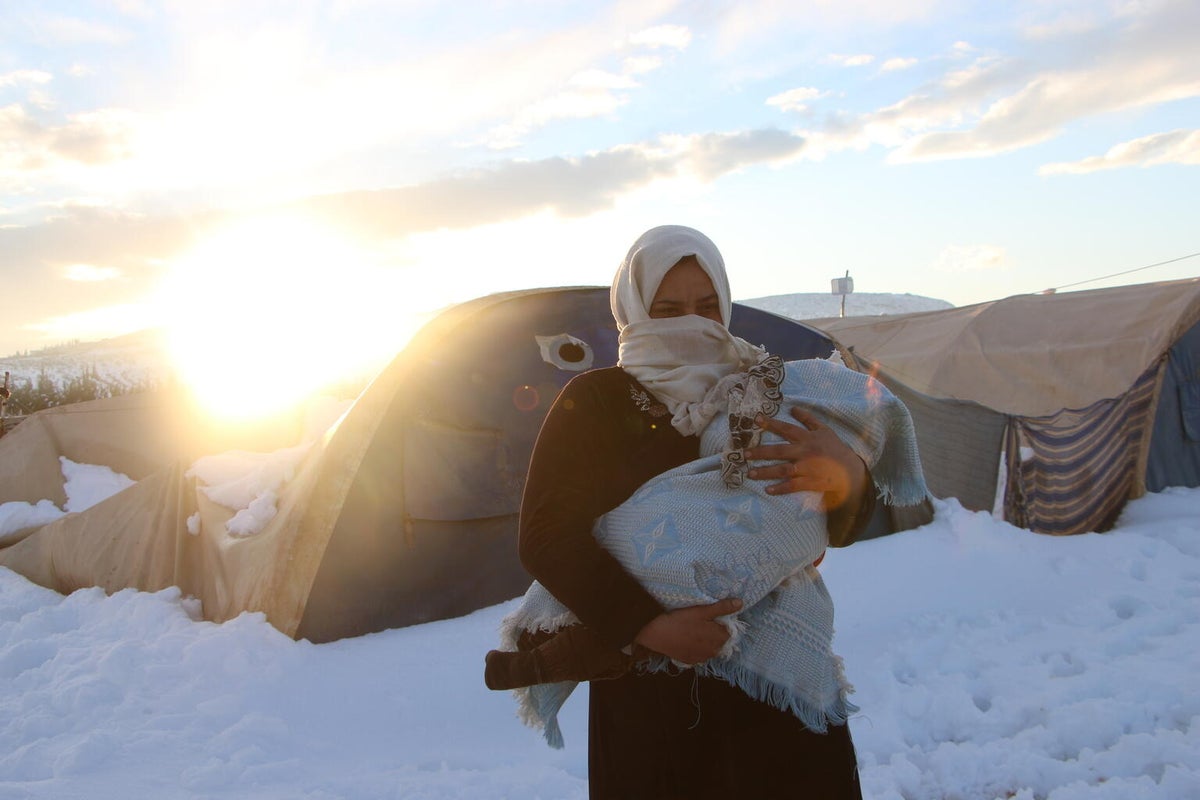
At a camp for internally-displaced-people (IDP) in northwest Syria, a mother holds her child close in the freezing cold. As temperatures plummet, the lack of heating adds to the vulnerability of children and families, making their already fragile situation more dire.
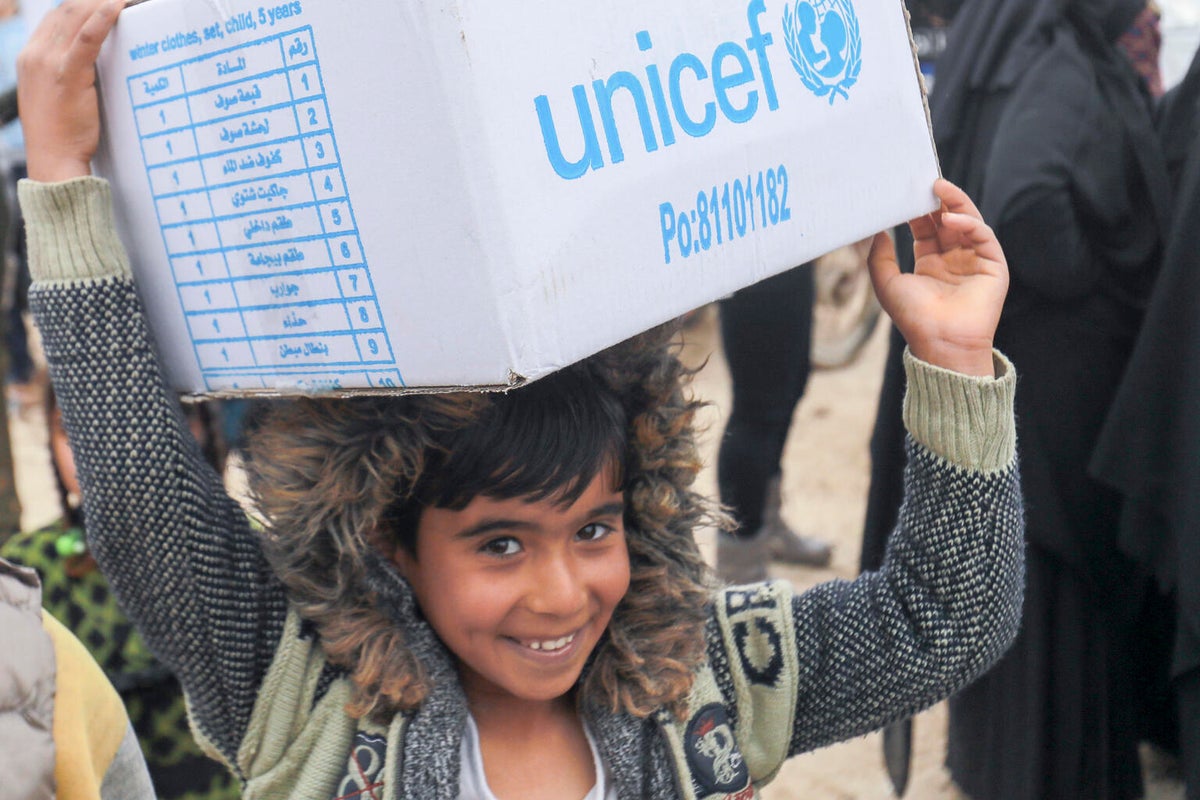
At an IDP camp, children help their parents gather supplies during the UNICEF-supported winter clothes distribution. Each box is filled with weather-appropriate gear to protect children from the harsh winter conditions.

Standing out the front of her old school, 14-year-old Aya looks at the damage caused by the ongoing conflict. Aya’s learning journey has not been an easy one.
In 2018, a shell fell on the house where Aya was staying. Her head was injured, and she felt terrified.
"After the incident, I lost any interest to leave the house and go to school. I was afraid of getting injured again at any point."
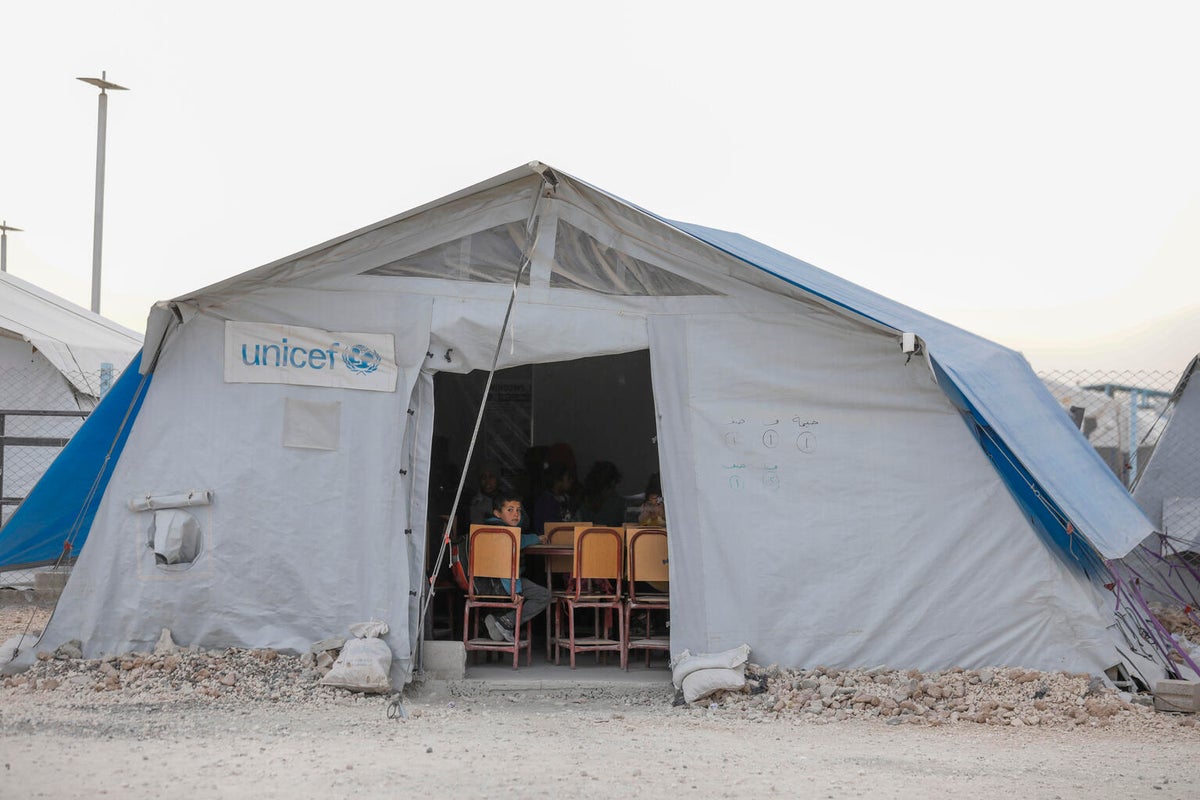
In northeast Syria, makeshift tents are transformed into classrooms, allowing children to continue their education despite the ongoing conflict.
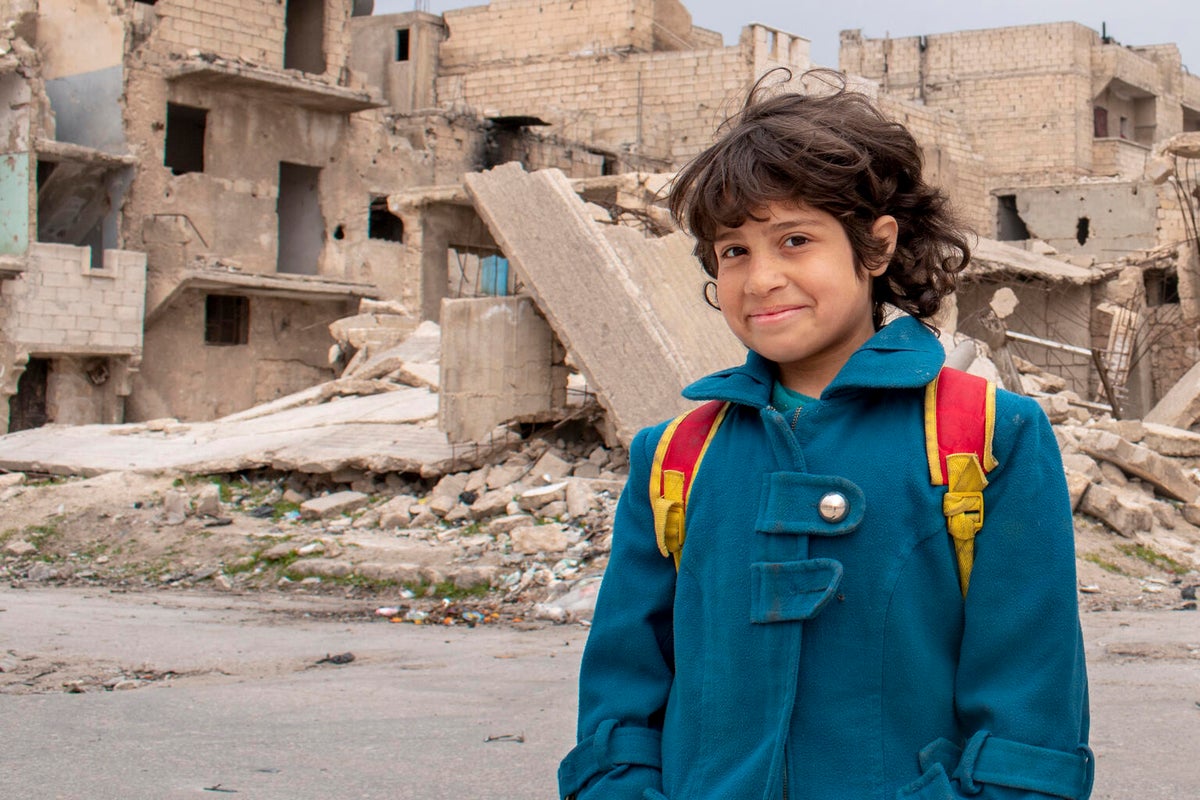
Maram was just four years old when she lost her leg. “She was too young to understand what had happened, and I would try to act calm when she asked,” says her mother, Sahar. “Maram would ask, ‘Mum, if I eat all my vegetables, will my foot grow again?’’’
As the conflict raged on, Maram grew increasingly anxious about loud noises. Her life was in constant upheaval as her family moved from place to place. When she started school, some children teased her for using a crutch, causing her to miss classes often.
Eventually, her family returned to their old neighbourhood. Maram received a prosthetic leg through an NGO and began visiting a UNICEF-supported centre near her house.
UNICEF is supporting children with disabilities at various centres and schools with inclusive education programs.
The aftermath of disaster
After devastating earthquakes hit the border of Syria and Türkiye on 6 February 2023, thousands of children and families were left displaced amidst winter rains and cold weather.
Most fled their homes with nothing but the clothes on their backs. Many found refuge with relatives, while others stayed at shelters under basic living conditions, with minimal access to services.

Six-year-old Musa stands inside the damaged living room of his family's home in Syria. A wall collapsed on him during the devastating earthquake, leaving him injured and forcing his family to flee and seek refuge in a nearby makeshift tent.
"My mother came and told me, "Wake up! There's an earthquake!" I went outside and something fell on me."

A child sleeps beneath a blanket in a temporary shelter. The utter destruction from the earthquake and fears of more to come caused people to flee for safety and shelter.

“I especially like the shoes. They’ll help me run around with my friends when we play,” says Salman.
Like many other children, he received a warm clothing kit from UNICEF at a school-turned-collective-shelter after the earthquake.

At 13–years–old, Maysaa lost three of her friends in the earthquake, leaving her deeply saddened by their loss.
“I saw them less than a week before the earthquake. When I saw their names on Facebook, I kept calling them because I couldn’t believe they died. I am very, very sad because I love them,” says Maysaa.
Despite her grief, Maysaa remains focused on her future and dreams. Before the earthquake, she was one of the top students at her school and eagerly awaits its reopening.
She has a message for other Syrian children:
"Don’t be scared and hopefully we will pass through this crisis safely. We are now in a safe place, and I pray to God that this doesn’t happen again."

The destruction of buildings, roads, and infrastructure in the area is visible, leaving families to seek refuge in makeshift tents.
Hope for the future

Fayaz has cerebral palsy, which affects his ability to move. “I could not walk, I could only crawl on my belly,” he says.
Through UNICEF’s programs, Fayez received mental wellbeing support, cash assistance, and case management services, which helped him thrive.
" I liked the sessions, where I could talk about my thoughts and feelings. Before, I was sad for not having friends and wished I could go to school like other children."

Layan, who was in Grade 8, attended a UNICEF-supported school in Syria, one of many that UNICEF has rehabilitated to ensure children can continue their education.
The rehabilitation work included repairing doors, windows, and classrooms, installing handrails and ramps, and improving water and sanitation facilities to ensure a safe, inclusive learning environment.
In 2023, UNICEF rehabilitated 25 schools in Syria, providing 16,700 children like Layan an opportunity to continue learning in a safe and inclusive environment.
"School will help me to make my dream of becoming a doctor come true. I love how the building looks like now."
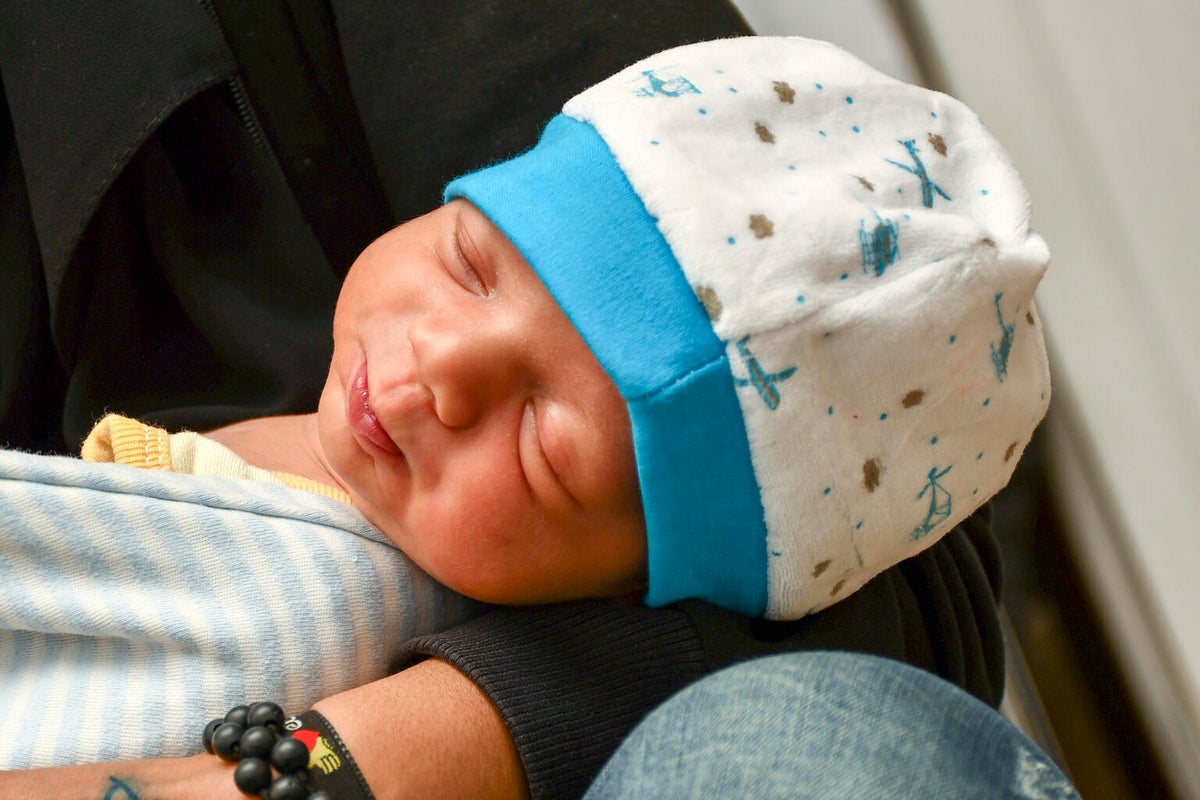
At only ten days old, Karam waits to receive his vaccines at a health centre during a UNICEF-supported national immunisation campaign.
“We heard about the campaign from social media, so I volunteered to bring Karam to the health centre to get his vaccine on time,” said his cousin Ayat.
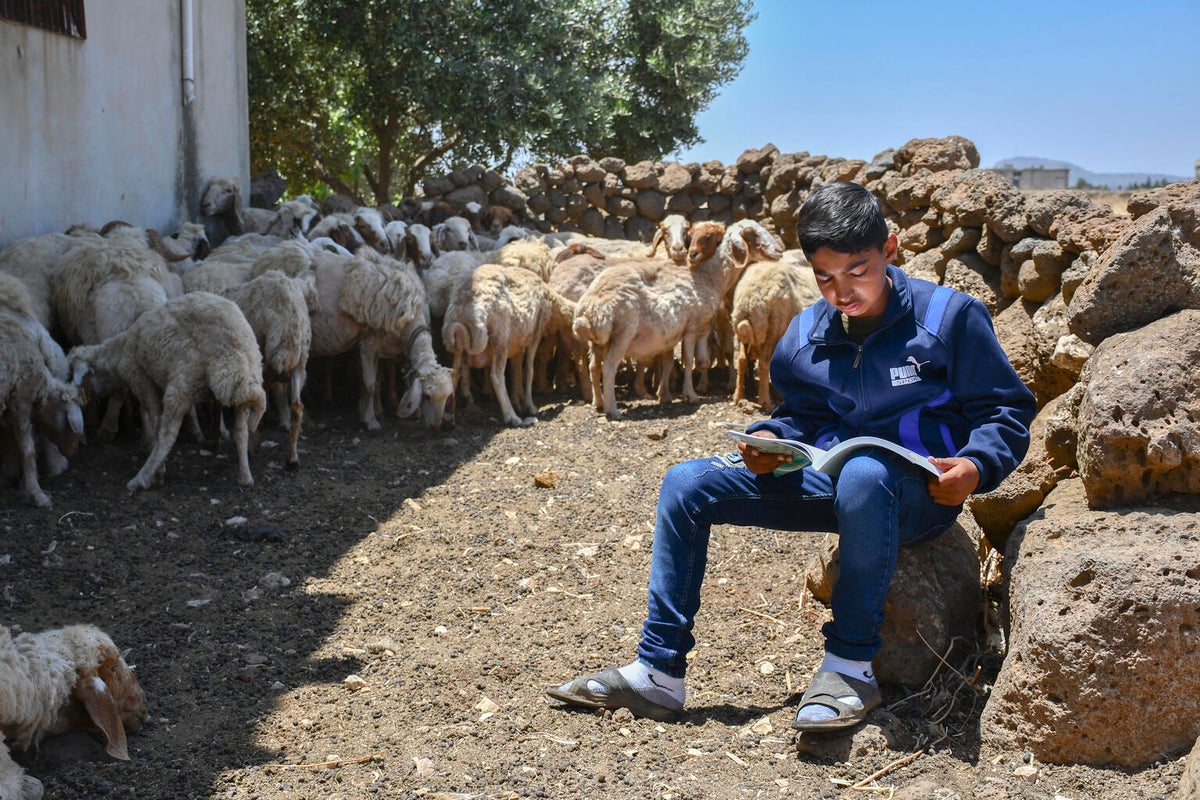
In 2020, Ahmad took on a responsibility beyond his years to support his family after his father fell from the roof of a building he was working on.
The accident caused his father temporary paralysis, and he underwent several surgeries to be able to walk again. It was impossible for him to go back to work so Ahmad had to leave school.
“I herded our neighbours’ sheep every day from early morning till sunset. It was exhausting, but what saddened me the most, was skipping school. I also missed my friends,” said Ahmad. He worked to support the family and pay for his father’s much-needed medical treatment and medicine.
Ahmad began attending a self-learning program at UNICEF-supported school, especially for out-of-school children to help them make up for missed learning. While herding sheep in his village, he is now also preparing for his final exams.
"I was overwhelmed about resuming my education, but it was not just that. I felt that I went back to living a normal life, meeting friends my own age and doing activities like sports, handicrafts and painting. I gained more self-confidence, and all of that gave me joy."
How to support the children of Syria
UNICEF is on the ground in Syria, helping to ensure children are healthy, educated and safe from harm. Working with local partners, we’re doing what we can to provide emergency health care, vaccinate babies against preventable diseases, treat children who are acutely malnourished and deliver emergency water and sanitation facilities.
But there is still much more to be done for the children of Syria. With your support, we can be there to ensure no child in crisis is left behind. No matter what.
Related articles
Stay up-to-date on UNICEF's work in Australia and around the world


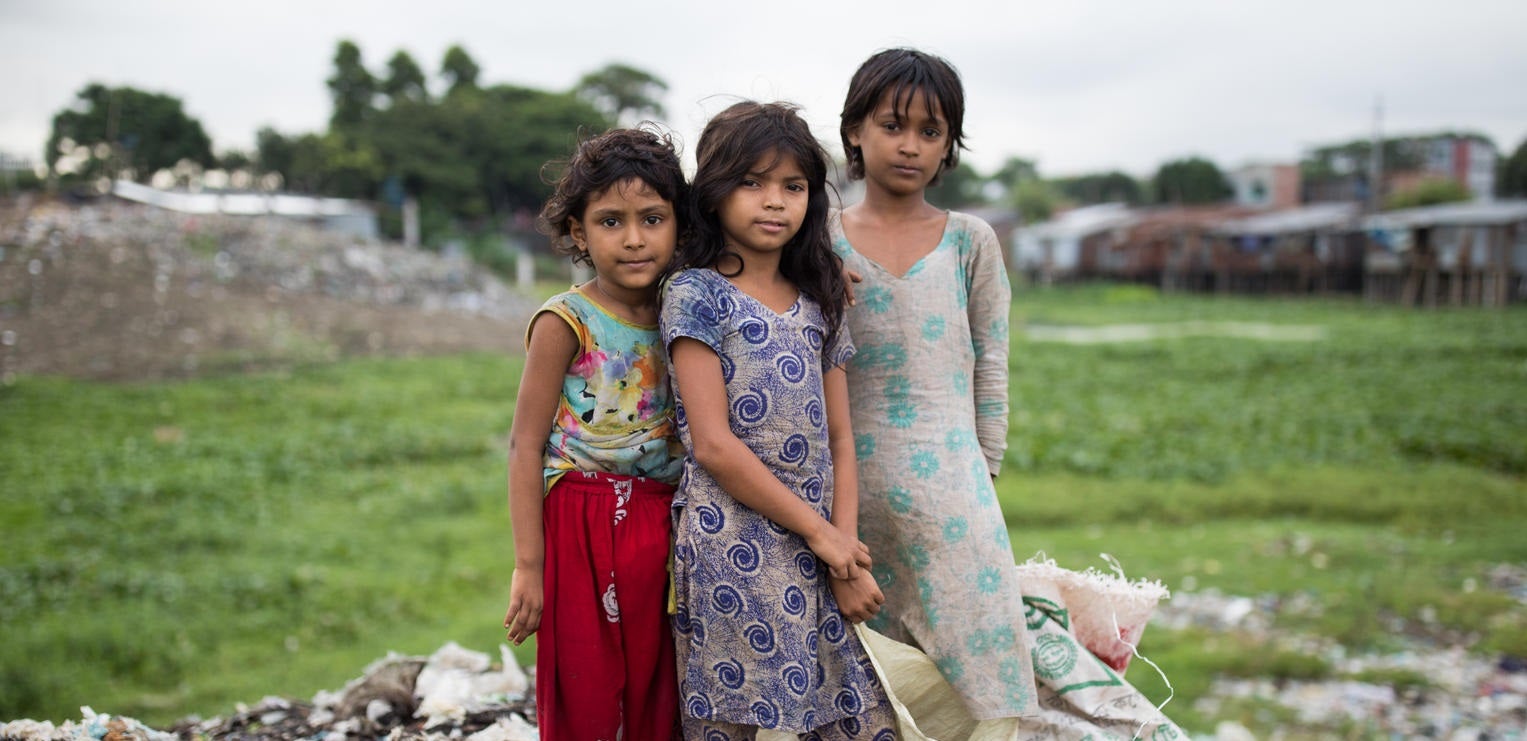
![With his family, Syrian refugee Shadi [NAME CHANGED], 9, has lived with a host family for nine months, in North Lebanon.](https://assets-us-01.kc-usercontent.com:443/99f113b4-e5f7-00d2-23c0-c83ca2e4cfa2/01664d5f-21f4-49bf-9a09-2d56b3fe8d7b/UNI638343.jpg?w=1800&fm=jpg&auto=format)

